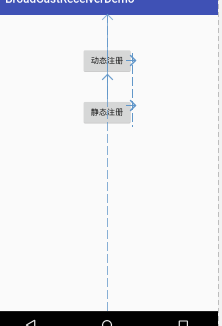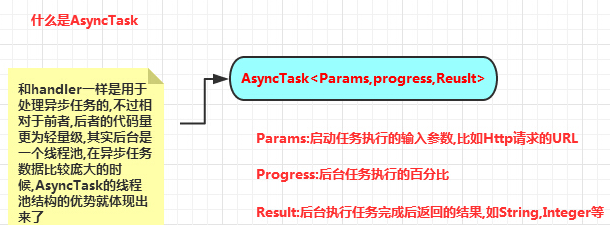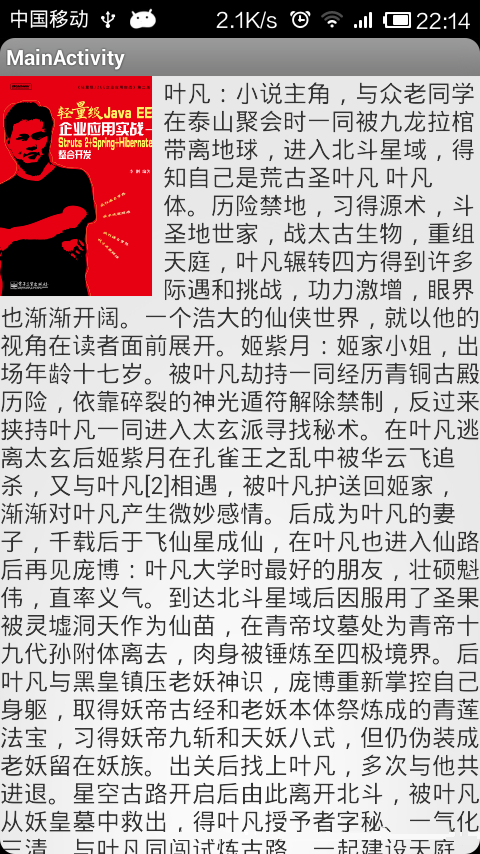編輯:關於Android編程
Android 最火的快速開發框架androidannotations配置詳解文章中有eclipse配置步驟,Android 最火快速開發框架AndroidAnnotations簡介文章中的簡單介紹,本篇注重講解AndroidAnnotations中注解方法的使用。
@EActivity
示例:
@EActivity(R.layout.main)
public class MyActivity extends Activity {
}
@fragment
示例:
@EFragment(R.layout.my_fragment_layout)
public class MyFragment extends Fragment {
}創建:
MyFragment fragment = new MyFragment_();
普通類:
@EBean
public class MyClass {
}
Activity中使用:
@EActivity
public class MyActivity extends Activity {
@Bean
MyOtherClass myOtherClass;
}
也可以用來聲明接口:
@Bean(MyImplementation.class)
MyInterface myInterface;
在普通類中還可以注入根環境:
@EBean
public class MyClass {
@RootContext
Context context;
// Only injected if the root context is an activity
@RootContext
Activity activity;
// Only injected if the root context is a service
@RootContext
Service service;
// Only injected if the root context is an instance of MyActivity
@RootContext
MyActivity myActivity;
}
如果想在類創建時期做一些操作可以:
@AfterInject
public void doSomethingAfterInjection() {
// notificationManager and dependency are set
}
單例類需要如下聲明:
@EBean(scope = Scope.Singleton)
public class MySingleton {
}
注意:在單例類裡面不可以注入view和事件綁定,因為單例的生命周期比Activity和Service的要長,以免發生內存溢出。
@EView
@EView
public class CustomButton extends Button {
@App
MyApplication application;
@StringRes
String someStringResource;
public CustomButton(Context context, AttributeSet attrs) {
super(context, attrs);
}
}
注冊:
創建:
CustomButton button = CustomButton_.build(context);
@EViewGroup
@EViewGroup(R.layout.title_with_subtitle)
public class TitleWithSubtitle extends RelativeLayout {
@ViewById
protected TextView title, subtitle;
public TitleWithSubtitle(Context context, AttributeSet attrs) {
super(context, attrs);
}
public void setTexts(String titleText, String subTitleText) {
title.setText(titleText);
subtitle.setText(subTitleText);
}
}
注冊:
@EApplication
@EApplication
public class MyApplication extends Application {
}
@EActivity
public class MyActivity extends Activity {
@App
MyApplication application;
}
@EService
public class MyService extends Service {
}
MyService_.intent(getApplication()).start();
MyService_.intent(getApplication()).stop();
@EReceiver
public class MyReceiver extends BroadcastReceiver {
}
@EActivity
public class MyActivity extends Activity {
@Receiver(actions = "org.androidannotations.ACTION_1")
protected void onAction1() {
}
}
@EProvider
public class MyContentProvider extends ContentProvider {
}
@EActivity
public class MyActivity extends Activity {
// Injects R.id.myEditText,變量名稱必須和布局的id名稱一致
@ViewById
EditText myEditText;
@ViewById(R.id.myTextView)
TextView textView;
}
@EActivity(R.layout.main)
public class MyActivity extends Activity {
@ViewById
TextView myTextView;
@AfterViews
void updateTextWithDate() {//一定要在這裡進行view的一些設置,不要在oncreate()中設置,因為oncreate()在執行時 view還沒有注入
myTextView.setText("Date: " + new Date()); }[...]
@EActivity
public class MyActivity extends Activity {
@StringRes(R.string.hello)
String myHelloString;//不能設置成私有變量
@StringRes
String hello;
}
@EActivity
public class MyActivity extends Activity {
@ColorRes(R.color.backgroundColor)
int someColor;
@ColorRes
int backgroundColor;
}
@EActivity
public class MyActivity extends Activity {
@AnimationRes(R.anim.fadein)
XmlResourceParser xmlResAnim;
@AnimationRes
Animation fadein;
}
@EActivity
public class MyActivity extends Activity {
@DimensionRes(R.dimen.fontsize)
float fontSizeDimension;
@DimensionRes
float fontsize;
}
@EActivity
public class MyActivity extends Activity {
@DimensionPixelOffsetRes(R.string.fontsize)
int fontSizeDimension;
@DimensionPixelOffsetRes
int fontsize;
}
@EActivity
public class MyActivity extends Activity {
@DimensionPixelSizeRes(R.string.fontsize)
int fontSizeDimension;
@DimensionPixelSizeRes
int fontsize;
}
@BooleanRes@ColorStateListRes@DrawableRes@IntArrayRes@IntegerRes@LayoutRes@MovieRes@TextRes@TextArrayRes@StringArrayRes
@EActivity
public class MyActivity extends Activity {
@Extra("myStringExtra")
String myMessage;
@Extra("myDateExtra")
Date myDateExtraWithDefaultValue = new Date();
}
@EActivity
public class MyActivity extends Activity {
// The name of the extra will be "myMessage",名字必須一致
@Extra
String myMessage;
}
MyActivity_.intent().myMessage("hello").start() ;
@EActivity
public class MyActivity extends Activity {//
@SystemService
NotificationManager notificationManager;
}
@EActivity
public class MyActivity extends Activity {
// Injects R.string.hello_html
@HtmlRes(R.string.hello_html)
Spanned myHelloString;
// Also injects R.string.hello_html
@HtmlRes
CharSequence helloHtml;
}
@EActivity
public class MyActivity extends Activity {//必須用在TextView
@ViewById(R.id.my_text_view)
@FromHtml(R.string.hello_html)
TextView textView;
// Injects R.string.hello_html into the R.id.hello_html view
@ViewById
@FromHtml
TextView helloHtml;
}
public class MyActivity extends Activity {//等同於 Activity.onRetainNonConfigurationInstance()
@NonConfigurationInstance
Bitmap someBitmap;
@NonConfigurationInstance
@Bean
MyBackgroundTask myBackgroundTask;
}
@HttpsClient HttpClient httpsClient;
@EActivity
public class MyActivity extends Activity {
@HttpsClient(trustStore=R.raw.cacerts,
trustStorePwd="changeit",
hostnameVerif=true)
HttpClient httpsClient;
@AfterInject
@Background
public void securedRequest() {
try {
HttpGet httpget = new HttpGet("https://www.verisign.com/");
HttpResponse response = httpsClient.execute(httpget);
doSomethingWithResponse(response);
} catch (Exception e) {
e.printStackTrace();
}
}
@UiThread
public void doSomethingWithResponse(HttpResponse resp) {
Toast.makeText(this, "HTTP status " + resp.getStatusLine().getStatusCode(), Toast.LENGTH_LONG).show();
}
}
@EFragment
public class MyFragment extends Fragment {//等同於 Fragment Argument
@FragmentArg("myStringArgument")
String myMessage;
@FragmentArg
String anotherStringArgument;
@FragmentArg("myDateExtra")
Date myDateArgumentWithDefaultValue = new Date();
}
MyFragment myFragment = MyFragment_.builder()
.myMessage("Hello")
.anotherStringArgument("World")
.build();
@Click(R.id.myButton)
void myButtonWasClicked() {
[...]
}
@Click
void anotherButton() {//如果不指定則函數名和id對應
[...]
}
@Click
void yetAnotherButton(View clickedView) {
[...]
}
@Click@LongClick@Touch
@ItemClick@ItemLongClick@ItemSelect
有兩種方式調用:
1.
@EActivity(R.layout.my_list)
public class MyListActivity extends Activity {
// ...
@ItemClick
public void myListItemClicked(MyItem clickedItem) {//MyItem是adapter的實體類,等同於adapter.getItem(position)
}
@ItemLongClick
public void myListItemLongClicked(MyItem clickedItem) {
}
@ItemSelect
public void myListItemSelected(boolean selected, MyItem selectedItem) {
}
}
@EActivity(R.layout.my_list)
public class MyListActivity extends Activity {
// ...
@ItemClick
public void myListItemClicked(int position) {//位置id
}
@ItemLongClick
public void myListItemLongClicked(int position) {
}
@ItemSelect
public void myListItemSelected(boolean selected, int position) {
}
}
//等同於SeekBar.OnSeekBarChangeListener.onProgressChanged(SeekBar, int, boolean)
@SeekBarProgressChange(R.id.seekBar)
void onProgressChangeOnSeekBar(SeekBar seekBar, int progress, boolean fromUser) {
// Something Here
}
@SeekBarProgressChange(R.id.seekBar)
void onProgressChangeOnSeekBar(SeekBar seekBar, int progress) {
// Something Here
}
@SeekBarProgressChange({R.id.seekBar1, R.id.seekBar2})
void onProgressChangeOnSeekBar(SeekBar seekBar) {
// Something Here
}
@SeekBarProgressChange({R.id.seekBar1, R.id.seekBar2})
void onProgressChangeOnSeekBar() {
// Something Here
}@SeekBarTouchStart and @SeekBarTouchStop
@TextChange(R.id.helloTextView)
void onTextChangesOnHelloTextView(CharSequence text, TextView hello, int before, int start, int count) {
// Something Here
}
@TextChange
void helloTextViewTextChanged(TextView hello) {
// Something Here
}
@TextChange({R.id.editText, R.id.helloTextView})
void onTextChangesOnSomeTextViews(TextView tv, CharSequence text) {
// Something Here
}
@TextChange(R.id.helloTextView)
void onTextChangesOnHelloTextView() {
// Something Here
}
@BeforeTextChange(R.id.helloTextView)
void beforeTextChangedOnHelloTextView(TextView hello, CharSequence text, int start, int count, int after) {
// Something Here
}
@BeforeTextChange
void helloTextViewBeforeTextChanged(TextView hello) {
// Something Here
}
@BeforeTextChange({R.id.editText, R.id.helloTextView})
void beforeTextChangedOnSomeTextViews(TextView tv, CharSequence text) {
// Something Here
}
@BeforeTextChange(R.id.helloTextView)
void beforeTextChangedOnHelloTextView() {
// Something Here
}
@AfterTextChange(R.id.helloTextView)
void afterTextChangedOnHelloTextView(Editable text, TextView hello) {
// Something Here
}
@AfterTextChange
void helloTextViewAfterTextChanged(TextView hello) {
// Something Here
}
@AfterTextChange({R.id.editText, R.id.helloTextView})
void afterTextChangedOnSomeTextViews(TextView tv, Editable text) {
// Something Here
}
@AfterTextChange(R.id.helloTextView)
void afterTextChangedOnHelloTextView() {
// Something Here
}
@EActivity
@OptionsMenu(R.menu.my_menu)
public class MyActivity extends Activity {
@OptionMenuItem
MenuItem menuSearch;
@OptionsItem(R.id.menuShare)
void myMethod() {
// You can specify the ID in the annotation, or use the naming convention
}
@OptionsItem
void homeSelected() {
// home was selected in the action bar
// The "Selected" keyword is optional
}
@OptionsItem
boolean menuSearch() {
menuSearch.setVisible(false);
// menuSearch was selected
// the return type may be void or boolean (false to allow normal menu processing to proceed, true to consume it here)
return true;
}
@OptionsItem({ R.id.menu_search, R.id.menu_delete })
void multipleMenuItems() {
// You can specify multiple menu item IDs in @OptionsItem
}
@OptionsItem
void menu_add(MenuItem item) {
// You can add a MenuItem parameter to access it
}
}
@EActivity
@OptionsMenu({R.menu.my_menu1, R.menu.my_menu2})
public class MyActivity extends Activity {
}
void myMethod() {
someBackgroundWork("hello", 42);
}
@Background
void someBackgroundWork(String aParam, long anotherParam) {
[...]
}
void myMethod() {
someCancellableBackground("hello", 42);
[...]
boolean mayInterruptIfRunning = true;
BackgroundExecutor.cancelAll("cancellable_task", mayInterruptIfRunning);
}
@Background(id="cancellable_task")
void someCancellableBackground(String aParam, long anotherParam) {
[...]
}
void myMethod() {
for (int i = 0; i < 10; i++)
someSequentialBackgroundMethod(i);
}
@Background(serial = "test")
void someSequentialBackgroundMethod(int i) {
SystemClock.sleep(new Random().nextInt(2000)+1000);
Log.d("AA", "value : " + i);
}
@Background(delay=2000)
void doInBackgroundAfterTwoSeconds() {
}
void myMethod() {
doInUiThread("hello", 42);
}
@UiThread
void doInUiThread(String aParam, long anotherParam) {
[...]
}
@UiThread(delay=2000)
void doInUiThreadAfterTwoSeconds() {
}
@UiThread(propagation = Propagation.REUSE)
void runInSameThreadIfOnUiThread() {
}
@EActivity
public class MyActivity extends Activity {
@Background
void doSomeStuffInBackground() {
publishProgress(0);
// Do some stuff
publishProgress(10);
// Do some stuff
publishProgress(100);
}
@UiThread
void publishProgress(int progress) {
// Update progress views
}
}
@OnActivityResult(REQUEST_CODE)
void onResult(int resultCode, Intent data) {
}
@OnActivityResult(REQUEST_CODE)
void onResult(int resultCode) {
}
@OnActivityResult(ANOTHER_REQUEST_CODE)
void onResult(Intent data) {
}
@OnActivityResult(ANOTHER_REQUEST_CODE)
void onResult() {
}
 Android簡易實戰教程--第二十七話《自定義View入門案例之開關按鈕詳細分析》
Android簡易實戰教程--第二十七話《自定義View入門案例之開關按鈕詳細分析》
對於自定義view,可能是一個比較大的瓶頸期。筆者也是如此,就像毛主席說的,抓住主要矛盾,一切都不難。一些大神也聲稱過自定義view並不難。PS筆者比較實在,是真還沒到感
 Android復習之BroadCastReceiver
Android復習之BroadCastReceiver
是什麼BroadCastReceiver是四大組件之一,相當於一個全局的監聽器,用於監聽系統全局的廣播。怎麼樣由於BroadCastReceiver是全局監聽器,因此它可
 事件處理機制之AnsyncTask異步任務
事件處理機制之AnsyncTask異步任務
(一)概述本節給大家帶來的是Android給我們提供的一個輕量級的用於處理異步任務的類:AsyncTask,我們一般是 繼承AsyncTask,然後在類中實現異步操作,然
 Android實現文字和圖片混排(文字環繞圖片)效果
Android實現文字和圖片混排(文字環繞圖片)效果
本文實例講述了Android實現文字和圖片混排(文字環繞圖片)效果。分享給大家供大家參考,具體如下:在平時我們做項目中,或許有要對一張圖片或者某一個東西進行文字和圖片說明